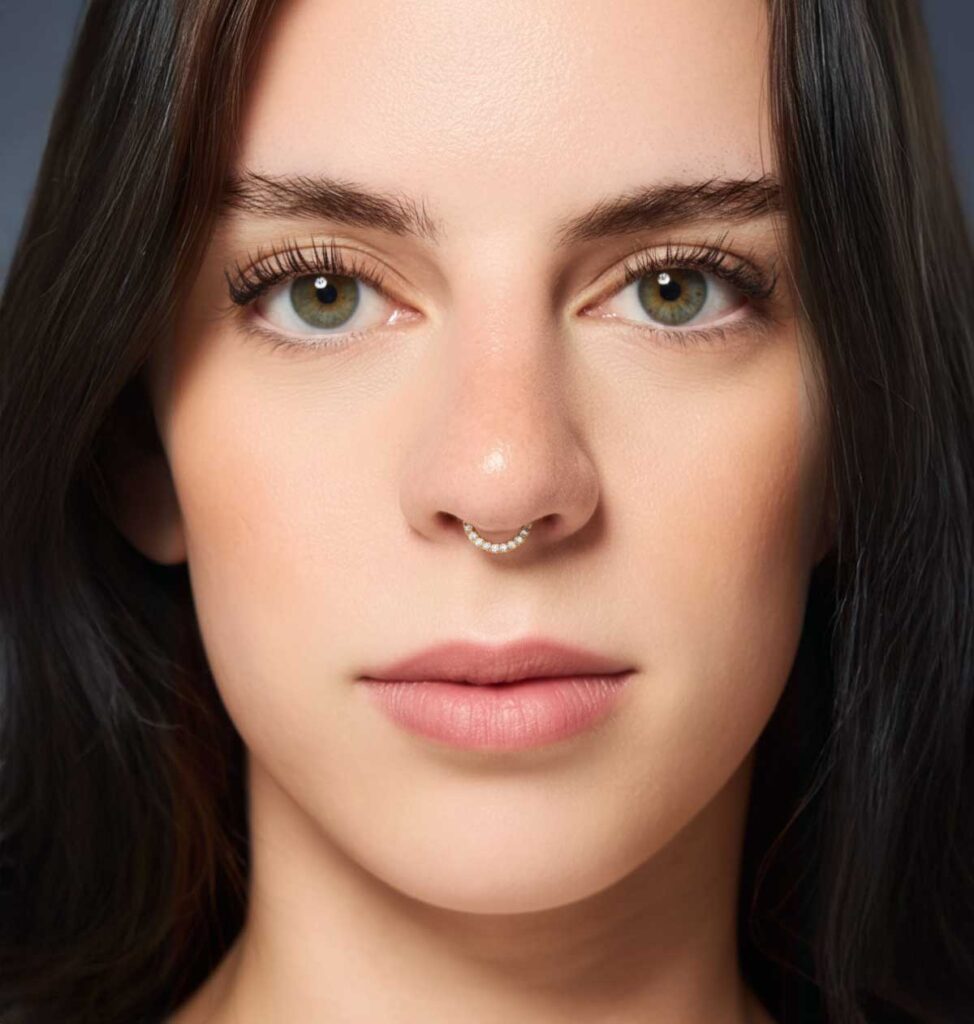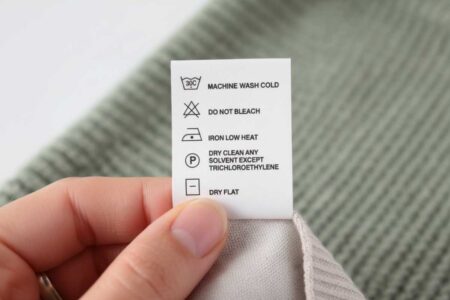Face Piercing Guide by Face Shape
Discover the most flattering face piercings for your unique face shape and features. Get personalized recommendations with placement suggestions, pain levels, and aftercare guidance.
How to Determine Your Face Shape
- Forehead: Measure across your forehead at the widest point
- Cheekbones: Measure across your cheeks at the widest point
- Jawline: Measure from the tip of your chin to below your ear, then double it
- Face length: Measure from your hairline to the tip of your chin
- Compare measurements: The largest measurement indicates your face shape
- Consider proportions: Look at the relationship between width and length
- Mirror test: Trace your face shape in a mirror with lipstick for visual confirmation
You want a new piercing, the tricky part is picking one that flatters your face and heals clean. Best Face Piercings for Your Face Shape calculator helps you choose placements and starter sizes that fit your features, with healing timelines and simple aftercare you can actually follow.
Best picks by face shape
- Pick your face shape, round, oval, heart, or square.
- See flattering picks, nostril, septum, helix, or conch, with starter sizes in mm.
- Plan the basics, pain feel, healing range, when a hoop swap makes sense, and a simple care routine.
Quick picks by face shape
Use this as a chat starter with your piercer, then let them size you to your anatomy.
| Face shape | Flattering placements | Starter sizes to ask for | Healing estimate |
|---|---|---|---|
| Round | High nostril, slim septum, flat or helix, stacked lobe | Nostril stud 18–20 g, 2–3 mm top, future ring 8–10 mm. Helix stud 16 g, 6–8 mm post | Nostril 4–6 months. Helix 6–12 months |
| Oval | Nostril, septum, conch stud or hoop | Septum 16 g, 8–10 mm ring. Conch 16 g stud 6–8 mm, or 12–14 mm hoop when healed | Septum 2–4 months. Conch 6–12 months |
| Heart | Lower nostril stud, conch, daith if anatomy allows | Nostril 18–20 g, 2–3 mm top. Conch ring 12–14 mm | Nostril 4–6 months. Cartilage 6–12 months |
| Square | Rounded septum ring, daith, smooth helix stud | Septum 16 g, 8–10 mm ring. Helix 16 g stud, 6–8 mm post | Cartilage 6–12 months |
Gauge helper, 16 g is about 1.2 mm, 18 g is about 1.0 mm. Ask your piercer to write your sizes in mm.
Safety and sizing basics
- Good for sensitive skin: start with implant grade titanium labeled ASTM F-136 or ISO 5832-3, or solid 14k gold that is nickel safe. The Association of Professional Piercers lists these as acceptable for fresh piercings.
- Why studs first: studs move less while you are swollen, so they rub less and snag less. Plan a hoop swap later when you get the green light.
- Care products: clean with sterile saline only. Skip alcohol and peroxide. They can slow healing.
Find your face shape fast

Stand in front of a mirror with hair back.
- Compare forehead, cheekbones, jawline.
- Note the widest point.
- Check the chin, soft point or straight line.
- Round: width and length are similar, softer jaw.
- Oval: a bit longer than wide, balanced features.
- Heart: wider forehead, delicate chin.
- Square: strong jaw, similar width forehead to jaw.
For nose placement visuals, scan how to know if a nose piercing will suit you.
Best facial piercings by face shape
These size notes are starting ranges. Your piercer will size you to your nose and cartilage.
Round face, add gentle length and a little angle
Good picks: High nostril studs, a slim round septum ring, a flat or helix stud, stacked lobe to lift the outer third.
Starter sizes to ask for: Nostril studs 18–20 g with 2–3 mm tops. If you switch later, many noses fit 8–10 mm rings. Helix studs 16 g flat-back with 6–8 mm posts on average cartilage.
Style tip: Go vertical. Slim studs and small gems keep the cheeks from doing all the talking.
Crosslink for comparison, peek at Oval face below to sanity check sizes.
Oval face, most styles work
Good picks: Classic nostril stud or snug hoop once healed, a delicate septum circular barbell, a conch stud or hoop to add weight at mid ear.
Starter sizes to ask for: Septum 16 g, 8–10 mm ring on many noses. Conch 16 g stud 6–8 mm post, or 12–14 mm hoop after healing. Nostril 18–20 g stud, 2–3 mm top.
Style tip: Keep proportions balanced so jewelry does not overpower your features.
Heart face, soften the forehead, add weight to the lower third
Good picks: Lower nostril stud or a small clicker later, conch hoop or stud for mid ear balance, daith if your anatomy allows.
Starter sizes to ask for: Nostril 18–20 g stud with 2–3 mm tops. Conch ring 12–14 mm is common. Daith often 16 g, diameter varies by ear.
Style tip: Small stones and warm metals pull focus toward the center without crowding the brow.
Square face, soften strong angles with curves
Good picks: Rounded septum ring or circular barbell, daith, smooth helix stud, later a faux orbital planned by a pro.
Starter sizes to ask for: Septum 16 g, 8–10 mm ring. Helix 16 g flat-back stud, 6–8 mm post length.
Style tip: Curved shapes, pearls, and smooth clickers soften edges.
Styling note for a more masculine look
Prefer a cleaner, low-key vibe, choose brushed titanium, slimmer stones, and tighter ring diameters. A compact 8 mm septum ring and 1–2 mm nostril tops read neat and balanced.
What I tried and what actually worked
I loved the idea of a big nostril hoop. On my round face it widened my cheeks in photos. I switched to a 2 mm titanium flat-back stud for a month, healed smoother, then downsized into an 8 mm ring. It looked balanced, it did not snag masks, and my selfies stopped fighting me.
Tiny wins that changed my healing:
- Ask for placement dots, take a quick selfie, adjust if needed.
- Sleep with a travel pillow so the fresh piercing does not press into foam.
- Keep a sterile saline routine morning and night, then leave it alone.
Pain and healing, what to expect
- Septum: quick pinch, watery eyes, then pressure. Most people feel stable in 2–4 months.
- Nostril: plan for 4–6 months to fully settle.
- Helix and conch: cartilage heals slow, plan 6–12 months.
Red flags and when to see a pro: spreading redness, swelling that worsens, thick yellow discharge, fever. If you have a history of keloids, talk to a dermatologist before you pierce.
Jewelry, materials, and budget
- Piercing fee: 50–150 USD in many studios.
- Jewelry: 30–120 USD for implant grade titanium or 14k gold.
- Threadless posts: easy to change later and gentle on tissue.
- When to switch to hoops: book a downsizing check at 6–8 weeks if calm, then ask about hoop timing. Cartilage needs months, not weeks.
More on cartilage piercing jewelry and sizing once you are healed.
If you react to metals, read do hypoallergenic earrings work for what to buy and what to avoid.
Common mistakes and easy fixes
- Starting with a hoop: hoops move and rub while you are swollen. Start with a stud, plan a swap later.
- Touching and sleeping on it: hands off, side sleepers can use a travel pillow.
- Guessing sizes: ask your piercer to write gauge, diameter, post length in mm on your aftercare card.
- Ignoring bumps: if the area is raised or very sore, get checked. Keloid-prone skin needs extra caution.
Curious about bigger cartilage projects, this industrial piercing guide lays out the reality.
Aftercare, simple routine
- Rinse with sterile saline twice daily, then air dry.
- Keep hair, makeup, and spray away from the site.
- No pools or hot tubs until your piercer clears you.
- Do not rotate jewelry, and skip alcohol, peroxide, and ointments.
Style ideas, once healed
Soft curves and pearls flatter square faces, slim clickers flatter round faces. A curated ear works for every shape. For look ideas, browse hot earring trends.
Mini checklist
- Pick a reputable needle-only studio, ask about sterilization.
- Choose F-136 titanium or 14k gold for fresh piercings.
- Get sizes in mm written down before you leave.
- Take photos of placement dots in natural light.
- Set a follow-up for downsizing or a hoop plan.
FAQ
1. What piercing suits my face best?
Round faces do well with high nostril or a slim septum. Oval faces can wear most styles.
2. What sizes should I ask for?
Get gauge, diameter, and post length in mm. Many nostrils start 18–20 g with 2–3 mm tops. Cartilage studs are often 16 g with 6–8 mm posts.
3. How long do helix and conch take to heal?
Cartilage heals slowly, plan six to twelve months with gentle care.
4. Can I start with a hoop?
Stud first is safer. Hoops move more and can irritate fresh tissue. Ask your piercer to plan a swap.
5. I am prone to keloids, should I get pierced?
Talk to a piercer and a dermatologist. Keloid-prone skin can form keloids after piercings.
More on Blufashion
- How do I calculate my jeans size?
- Ring Size Finder, measure at home
- Swimsuit Size Chart and Support Picker
- Stop roll downs. Get your exact fit. Start here
- Need a quick fit, try the Hat Size Calculator
- International Size Converter, US, UK, EU, AU, JP





